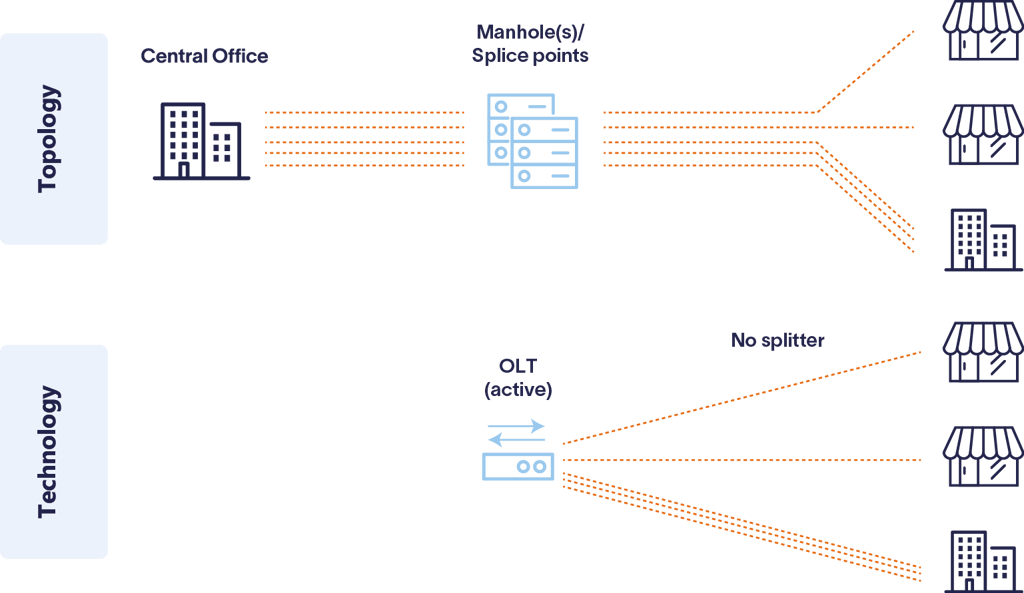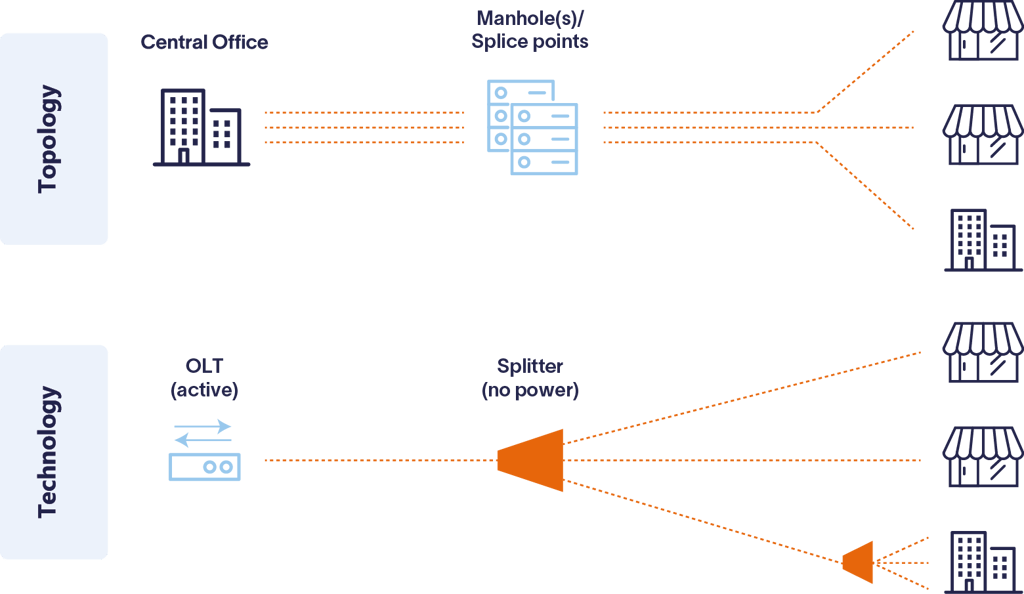INSIGHTS
Pan-European Fiber Rollout: The most effective way forward
Altman Solon, the largest global strategy consulting firm exclusively working in the TMT sectors, compared existing regulatory regimes and Fiber-to-the-Home (FTTH) deployments in ten of the biggest European Union economies.
Under the European Commission’s Digital Decade policy program, all households in the EU should have gigabit broadband by 2030, capable of providing adequate connectivity for video streaming, immersive media, and connected devices. To achieve this, network operators and regulators in EU countries are weighing their options for appropriate Fiber-to-the-Home (FTTH) rollout. There are two technologies to choose from: point-to-point (P2P) and point-to-multipoint (P2MP).
Altman Solon conducted an audit of leading network operators and regulators in Austria, Belgium, Denmark, France, Germany, Italy, the Netherlands, Portugal, Spain, and Sweden to gain insight into how countries are finding effective ways to expand broadband access. Survey findings highlight the value of P2P technology in ensuring higher values of connectivity and bandwidth, but P2MP is faster and cheaper to deploy while meeting households’ and businesses’ connectivity and bandwidth needs. As a result, P2MP is the dominant technology deployed in nine out of ten countries.
Comparing point-to-point and point-to-multipoint
Point-to-point is a network structure that originates from a central office containing a core switch, which passes through manholes and splice points and connects to aggregation switches located in individual households without a splitter. These aggregation switches connect to Optical Network Terminals (ONTs) at user premises through multiple fiber ports.
Point-to-multipoint is fundamentally similar and uses an Optical Line Terminal installed in a central office. However, the fiber runs to a passive optical splitter, where a fan-out connects a maximum of typically 32-64 users. Every user has an Optical Network Unit (ONU) where the fiber ends.
Point-to-Point (P2P) Network Structure

P2P is higher performing, but P2MP is cheaper and easier to rollout
When comparing these network architectures, the P2P protocol can support bandwidths of up to 100 gigabits per second symmetrical and above. These high-performance levels are suitable for connecting large enterprises or data centers and are well above the connectivity needs of the average household or business today. Because P2P networks don’t use a splitter, they require dedicated fiber strands for each premise, resulting in higher capital expenditures. Due to this, the rollout of P2P technology also tends to be slower than P2MP.
Point-to-Multipoint (P2MP) Network Structure

Today, P2MP networks are based on gigabit passive optical network (GPON) technology and usually provide 2.5 gigabits per second downstream and 1.25 gigabits per second upstream. While this is significantly lower than theoretical P2P performance, it is sufficient to support the broadband performance needs of most business customers and consumers today.
Many P2MP operators are considering upgrading GPON to XGS-PON technology, which can provide customers with 10 gigabits per second symmetrical bandwidth. Speeds of up to 100 gigabits per second have been successfully tested by network equipment providers.
P2MP is the most used deployment protocol, and regulation is scarce
P2MP deployments have been adopted in nine out of the ten countries studied. Sweden is the country with widespread P2P adoption, primarily due to historical precedent.
Few regulators in the European countries assessed impose regulations based on deployment type. In Belgium, the European Commission required the Proximus joint ventures to deploy P2P topology and provide layer one wholesale access. In Germany, subsidized areas are regulated accordingly.
P2MP allows for cheaper and faster deployment with sufficient speed for B2C customers
Broadband expansion throughout the European Union is critical to digital transformation, economic growth, and bridging the urban-rural divide. P2MP technology for FTTH can be deployed faster and at a lower cost than a full P2P rollout. Its upgrade path towards XGPON with higher speeds of 10 and later 100 gigabits per second (symmetric) is in progress and being tested. P2P should be deployed for enterprise users with higher requirements.
Our findings show that EU regulators place fewer restrictions on FTTH technologies than Fiber-to-the-Curb (FTTC) rollouts. Although this may change as fiber deployment progresses, it appears less likely that regulators will pressure network operators to deploy P2P over P2MP soon.
Want to learn more about fiber rollout strategies in the EU?
Fill out the form below for our detailed index on FTTH rollout strategies in Austria, Belgium, Denmark, France, Germany, Italy, the Netherlands, Portugal, Spain, and Sweden, with information on local incumbents and regulatory regimes.
Thank you to Mirko Gramatke for his contributions to this report.